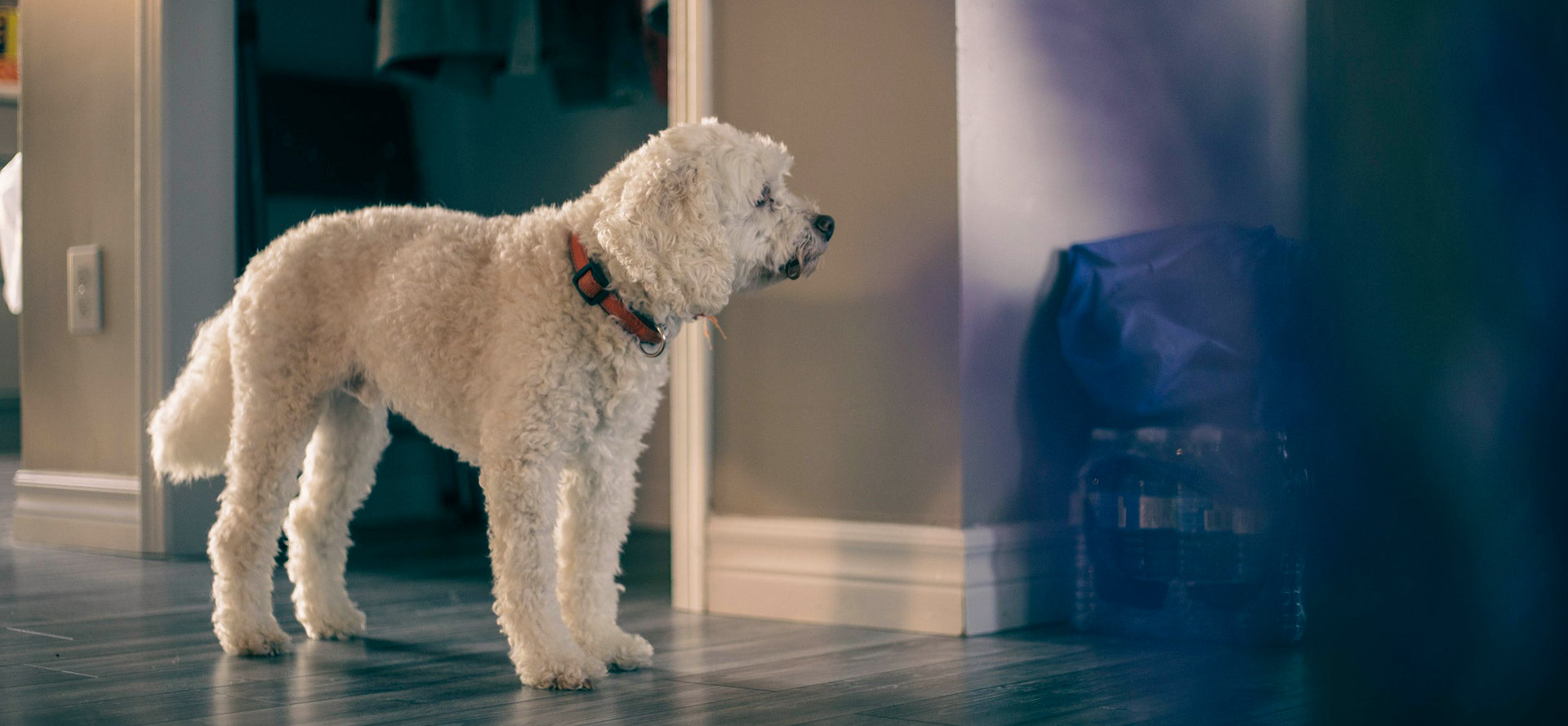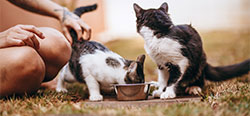Dog Behavior

Dog behavior is a complicated thing. Our pets can certainly be “family members”, and we may feel that we understand them as well as we understand our human loved ones, but the truth is that a lot of things get lost in translation between dogs and humans. We often misinterpret the behavior of dogs, and they often misinterpret our responses.
In this guide, we’ll explain everything you need to know about dog behavior in order to understand your furry friends better.
Types of Dog Behavior
There are lots of different types and subtypes of dog behavior. Some behaviors, of course, are positive, like playing or performing obedience commands successfully. You don’t need to worry about these positive behaviors, or even about neutral behaviors. However, there are also many negative types of behavior that present commonly in dogs. These behaviors are often symptomatic of a bigger problem, and they can even lead to bigger problems if ignored, so it’s important to recognize when your dog exhibits problematic behavior and act as quickly as possible.
Destructive Behaviors
Destructive behavior in dogs can be caused by almost anything, and there are many different common destructive behaviors. Dogs’ destructive behaviors may affect your yard, your home, your possessions, or your dog’s possessions. The latter may seem less harmful, but you should try to solve destructive behavior regardless of what is being destroyed. Common destructive behaviors in dogs include:
- Digging
- Chewing
- Scratching
Tearing up toys is also fairly common. That’s not to say that wear and tear isn’t normal on your dog’s toys -- they are called “chew toys”, after all -- but your pup shouldn’t be completely destroying or eating parts of their toys.
Aggressive Dog Behavior
Many dogs exhibit some form of aggressive behavior, either towards people or towards other animals, or sometimes even both. Aggressive behaviors include barking, growling, and biting or attempting to bite, and they may be triggered by certain individuals (or certain types of individuals) or situations. For example, some dogs may act aggressively towards all strangers, while others may act aggressively towards anyone who they perceive as trying to take something from them, like toys or food.
Situation-specific aggressive behaviors include:
- Leash aggression.
- Barrier aggression.
- Lap guarding.
- Resource guarding.
Obsessive Behaviors
Obsessive behaviors can be tough to spot because they are often behaviors that could be neutral or harmless. For example, a dog that scratches itself because they are itchy is behaving normally, and there is no problem, but a dog that scratches itself compulsively, when they have no physical reason for it, is exhibiting an obsessive behavior. Licking (either themselves or objects) and chewing are some other examples of behaviors that can be obsessive behaviors when there is no concrete reason for the dog to be doing them.
Anxious Dog Behavior Problems
In many ways, dogs and humans act similarly when they are anxious. An anxious dog might pace, sigh, or whine, just like an anxious human. There are also more canine-specific anxious behaviors, such as panting or drooling, and body language, such as a tucked tail. These behaviors are normally triggered by a certain situation, but a number of factors affect the triggers a dog has. Although anxious behaviors tend to be relatively short-term when they occur, it’s still important to recognize when your dog is showing signs of anxious behavior, so that you can determine what situations are causing problems for them.
Reasons for Dog Behavior Changes
We often try to guess what is causing our dogs’ behavioral problems by figuring out what seems the most logical to us, or what would cause a human to have the same problems, but things are not the same when we are talking about fluffy pets. To keep your pet happy and healthy, you have to address the cause of the problem, not just the behavior itself.
Health Problems
The first thing to consider when your dog is having new or unusual behaviors is whether there is some health problem behind it. For example, when a dog starts going to the bathroom in the house, many owners assume that the dog is “acting out” or “misbehaving”, when health issues like UTIs are a much more common cause of accidents. Many aggressive behaviors are caused by pain that is the result of a chronic health problem or an injury; pain may put dogs in a bad mood, and dogs may be put in pain by interactions with other dogs and humans that would be ok if they were not injured.
Boredom
Some people forget that dogs are not toys or decorations -- they are living members of the household, and just like the rest of us, they can get bored! Dogs are happiest when they have a job to do or a game to play, or when they are actively spending time with someone. A dog that is left alone, with nothing to do and no way to entertain itself, will get bored. Eventually, they will take matters into their own hands by chewing on things that are not toys, barking or howling for attention, or exhibiting other problematic behaviors.
Instinct
Many behaviors that are upsetting to humans are just caused by dogs being dogs. It’s normal, to some extent, for dogs to want to dig, chase smaller animals, roll in dirt or poop, “mark” their territory, and generally act like other animals. Dogs may be more domesticated than any other species of animal, but their ancestors’ instincts haven’t been completely bred out. Instinctive behaviors can often be mitigated with basic training. For example, if your dog’s instinct is to “mark”, their house training should stop them from peeing indoors, even if they smell that another animal has peed indoors at some point in the past.
Conditioning
Dogs can be trained to behave badly, although this is typically done by mistake and without the human realizing what they’re doing. When you adopt a rescue dog, they may have behaviors that were taught by their previous owner, but even you can encourage bad behavior without realizing it. If our dog barks, our first impulse may be to give them attention, toys, or something else to distract them. We do this to stop the barking, but the real effect is that the dog learns that they are rewarded for barking.
Conclusion
There are many different behaviors that are common in dogs, and while not all of them cause problems, some of them do. These problematic behaviors can be caused by health problems, boredom, the dog’s instincts, or conditioning by you or a previous owner. If you don’t know what is causing your dog’s behavior, check first with your vet and second with a dog trainer to see if there are any obvious health concerns or conditioned responses that could be to blame. Once you know the root cause of the problem, you will be able to address it quickly to improve your dog’s life as well as your own.
FAQs
What is the meaning of dog behavior?
Most of the time, dogs aren’t “trying” to communicate with us through their behavior. However, different dog behaviors may mean that the dog is feeling happy or upset, having health problems, feeling bored, or a number of other things.
How to correct dog behavior?
If the dog’s behavior is caused by a health problem, then you can usually correct the behavior by addressing the health problem. Otherwise, training the dog and keeping the dog engaged in activities like work or play is useful in correcting behavioral problems.
Does neutering change dog behavior?
Since neutering removes the primary source of testosterone in a male dog’s body, their behavior may change somewhat. Most of these changes are related to mating instinct; a dog that has been neutered is less likely to look for a mate or exhibit territorial behavior than a dog that has not been neutered.
Does spaying change dog behavior?
Since spaying removes the primary source of estrogen in a female dog’s body, their behavior may change somewhat. Most of these changes are related to the estrous cycle; during her heat cycle, a female dog will often become irritable and urinate frequently, but such behaviors do not occur in spayed dogs.
How to correct dominant dog behavior?
Dominant dog behavior can take a long time to correct. Training, strict rules, and tools like “Gentle Lead” collars can help to reduce your dog’s dominant behavior towards you, other humans, and other dogs.
How to read dog behavior?
Dog behavior is a complicated thing, and understanding it isn’t intuitive for most people. Study dog body language and talk with a dog trainer to get a more complete understanding of how to read your dog and their actions.
Tags: pet supplies, underweightdog, is it bad for cats to eat flies, custom dog collars, best outdoor dog kennel, how do dog whistles work, why does my cat stare at me without blinking, dog hoodie sweatshirt, interactive toys dogs, good dog treats




